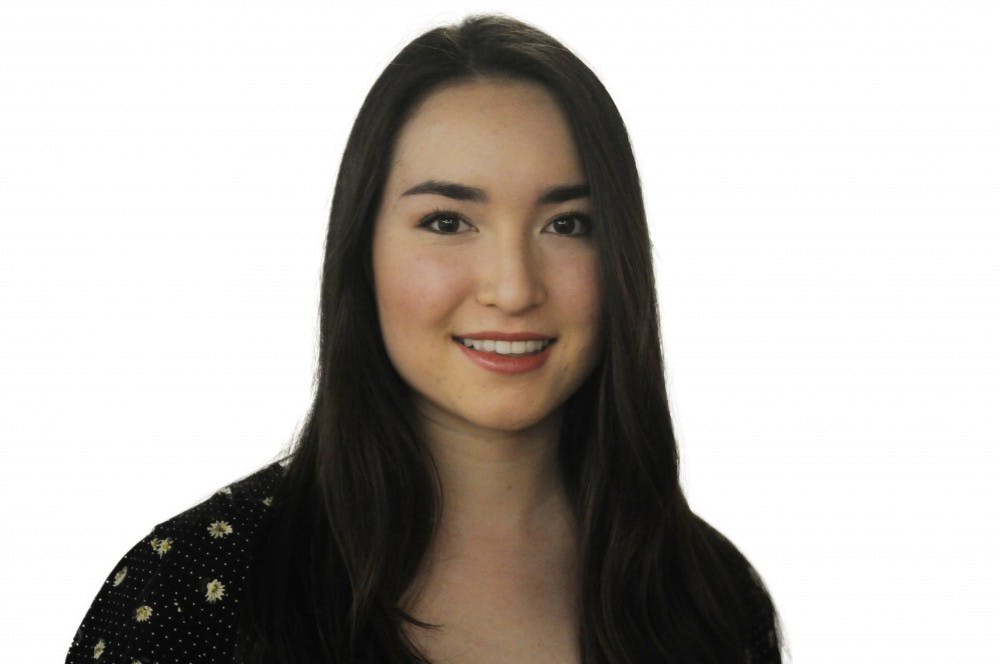M y fellow columnist, Katiera Sordjan, made a great point last week about how encouraging body positivity among women isn’t progress if it’s still focused on appealing to men . I’d like to take her point and go a little further.
I think the movement to universalize beauty — buoyed along by mantras such as “everyone is beautiful,” and “beauty is on the inside,” commercialized by Dove’s Real Beauty campaign and illustrated with thousands of Tumblr photos of uplifting quotes in curly font written across a sunset — is one of the most misguided attempts to fix a social ill a group of well-meaning individuals has ever dreamt up.
Let’s start with the fact that universalizing beauty is a lie, and it’s not a lie that’s fooling anyone. Not everyone is beautiful. Beauty is a relative term. As such, for some to gain the label “beautiful,” others must lose it. Beauty, like cleverness and athleticism, is a spectrum, and there’s nothing wrong with appreciating particular beauty in others. If everyone is beautiful, the term is meaningless.
This is fairly obvious , which is why when we say “everyone is beautiful,” that’s not really what we mean. What we’re going for is something more along the lines of “everyone deserves to be valued,” and if we can agree that everyone is beautiful, it’s not such a problem that we value people on the basis of beauty.
And that’s what is so wildly off the mark about this movement. Rather than fixing a problem, it tries to convince us that the problem is not there. Rather than calling beauty what it is — a shallow criterion of worth — it imbues it with new and special powers.
Not only can beauty now exist entirely undetected by its possessor — “you don’t know you’re beautiful” — but it also has the power of invisibility — “inner beauty.”
Rather than stripping beauty of its unwarranted value-giving power, the mainstream body positivity movement has maintained beauty’s position as the primary currency of value for women — but it’s kicked it up a notch.
Not only is beauty the best thing a woman can have on the outside, but also the best thing she can have on the inside, too.
And that brings me to the proof that we have failed in our attempt to redefine the term “beautiful” — the fact that it’s exclusive to women. You don’t see men reassured that they are beautiful even if they don’t know it. It’s ridiculous to even imagine.
If this movement really were successfully making beautiful mean “smart” or “compassionate” or “competent,” men would want in on it too. But it’s not. Rather, it’s doing an excellent job of distracting us from the harmful fact that beauty is the most valuable attribute a woman can have, while men are admired for other characteristics and skills before they are judged for their appearance.
And this might not be so bad if, in terms of things to be valued for, beauty is one of the worst.
For one, it’s not something that can be earned. A woman is born pretty or she’s not, so “beautiful” says nothing about her personality, values or competencies. Further, beauty fades with time. Unlike the pursuit of knowledge or professional success, beauty is a downhill march for the majority of our adult lives. People are largely powerless to change their looks, which is why disproportionately applying beauty standards to women is disempowering.
The intent behind the movement to tell every woman she is beautiful is good, but it isn’t working and we don’t need it. The problem is not the fact that some people are better looking than others.
The problem is that we live in a world where the idea of saying a woman isn’t beautiful is so unthinkable that we’ve tried to redefine beauty itself. The only thing that needs to be redefined is its pla ce on our list of priorities.
Sophia Wushanley is a College senior from Millersville, Pa., studying philosophy. Her email address is wsophia@sas.upenn.edu. “Another Look” appears every Tuesday.



